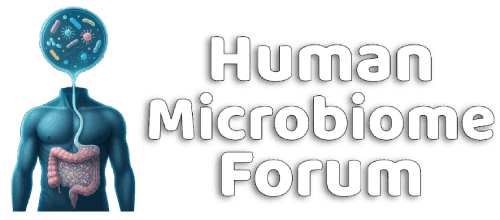Are there any bacteria mentioned in the below paragraph that might be available to purchase in the near future? How many of the bacteria mentioned might become popular probiotics?
https://www.mdpi.com/2073-4409/12/13/1735
The adult gut microbiota is composed mainly of the phyla Firmicutes, Bacteroidetes, Proteobacteria, Actinobacteria, Verrucomicrobia, and Fusobacteria. Between 70 and 90% of the total abundance is composed of the phyla Firmicutes and Bacteroidetes. Prominent genera from Bacteroidetes phylum is represented by Bacteroides, Parabacteroides, and Prevotella. In the phylum Firmicutes, Clostridium, Lactobacillus, Streptococcus, Enterococcus, Eubacterium, and Ruminococcus, among others, are included. The phylum Actinobacteria accounts for less than 10% of the total gut microbiota, and its prominent genera are Bifidobacterium and Collinsella. The Proteobacteria phylum constitutes less than 2% of total abundance, and Helicobacter and Escherichia are the principal genera. Phyla Fusobacteria and Verrucomicrobia constitute less than 3% of the total gut microbial diversity and are dominated by the Fusobacterium and Akkermansia genera, respectively [
49]. In general, it is accepted that Bifidobacterium and Lactobacillus strains provide benefits to the host and are commonly used as probiotics [
50]. Recently, new beneficial gut bacterial species have been identified, including Faecalibacterium prausnitzii, Ruminococcus bromii, and Akkermansia muciniphila [
50]. Faecalibacterium prausnitzii has anti-inflammatory properties and is one of the main producers of butyrate, Ruminococcus bromii is a fundamental species for degrading resistant starch that allows other bacteria to utilize the breakdown products, and Akkermansia muciniphila is a mucin-degrading bacterium providing oligosaccharides from mucin to other bacteria and produces acetate and propionate, which butyrate producers use. Its decrease has been associated with obesity and other metabolic diseases. On the other hand, pathobionts are opportunistic bacteria species with the potential to turn pathogenic under adverse conditions [
51]. Their expansion occurs when there is an imbalance in the microbiota. Examples of pathobionts include Clostridioides difficile, Helicobacter hepaticus, Helicobacter pylori, segmented filamentous bacteria (SFB), invasive Escherichia coli, Proteus mirabilis, Klebsiella pneumoniae, Prevotellaceae, TM7, and vancomycin-resistant Enterococcus spp [
51]. The beneficial use of prebiotics (nutrients that are degraded by gut microbiota, stimulating the growth of limited bacterial species) and probiotics (live microorganisms that provide a benefit on the host) to restore microbial composition has been known for many years. In general, probiotic intervention studies have used strains of bifidobacteria and lactobacilli, as they are recognized as safe, and their administration has shown effectiveness against many diseases, such as obesity, insulin resistance syndrome, type 2 diabetes, and non-alcoholic fatty liver disease, among others [
52].
See here as well:
https://www.tandfonline.com/doi/full/10.1080/19490976.2019.1613124
The human intestinal commensal microbiota and associated metabolic products have long been regarded as contributors to host health. As the identity and activities of the various members of this community have become clearer, newly identified health-associated bacteria, such as
Faecalibacterium prausnitzii, Akkermansia muciniphila, Ruminococcus bromii and
Roseburia species, have emerged. Notably, the abundance of many of these bacteria is inversely correlated to several disease states. While technological and regulatory hurdles may limit the use of strains from these taxa as probiotics, it should be possible to utilize prebiotics and other dietary components to selectively enhance their growth
in situ. Dietary components of potential relevance include well-established prebiotics, such as galacto-oligosaccharides, fructo-oligosaccharides and inulin, while other putative prebiotics, such as other oligosaccharides, polyphenols, resistant starch, algae and seaweed as well as host gut metabolites such as lactate and acetate, may also be applied with the aim of selectively and/or differentially affecting the beneficial bacterial community within the gastrointestinal environment. The present review provides an overview of the dietary components that could be applied in this manner.
This is interesting:
The marine environment is often considered a vast, untapped reservoir with regards to the microorganisms and compounds present, the metabolites produced and interactions that occur in this ecosystem. New bioactives and potential prebiotic substrates are being harnessed from this rich environment. Seaweeds, also known as marine macroalgae, are rich in polysaccharides and bioactive compounds, which could be applied to improve human and animal health.
Citation99,
Citation100 Seaweeds can be subdivided into three categories based on their pigmentation; Rhodophyta (red seaweed), Chlorophyta (green seaweed) and Phaeophyta (brown seaweed).
Citation99 Differences in composition and structure of the polysaccharides present in these seaweeds are also evident. Brown seaweed is of particular interest as it possesses polysaccharides such as fucoidan, laminarin and alginate.
Citation101 Fucoidans comprise a class of fucose-rich sulfated polysaccharides often located in the cell walls of brown macroalgae. It is suggested that fucoidans with differing structures may impact the gut in a variety of ways. For example, a study carried out by Shang
et al.,
Citation102 established that fucoidans isolated from
Ascophyllum nodosum (FuA) and
Laminaria japonica (FuL) had positive but slightly differing effects on the murine gut microbiota due to their structural differences. FuA has a type I back-bone structure whereas FuL has a type
II structure. FuL markedly increased the levels of
Ruminococcaceae while FuA enhanced
Lactobacillus, Anaeroplasma and
Thalassospira. In a follow-up study on HF diet-fed mice, these fucoidans improved MetS induced by a HF diet.
Citation103 Dietary supplementation with fucoidan decreased body weight in HF diet-fed mice and also improved glucose intolerance and insulin resistance. Both fucoidans separately ameliorated intestinal dysbiosis caused by HF diet and significantly increased
Akkermansia abundance. An evolving body of evidence has linked
A. muciniphila with a lean phenotype and often levels are lower in those with obesity and its related metabolic alterations. Additionally, SCFA producers such as
Blautia and
Alloprevotella were increased. This contributes to the improvement of the health status of the gut microbial community. Remarkably there did not seem to be any major differences between FuL and FuA in this instance as both influenced the gut bacterial community correspondingly. Thus, ingredients from marine resources, particularly fucoidan, have potential as mediators of gut microbes.
